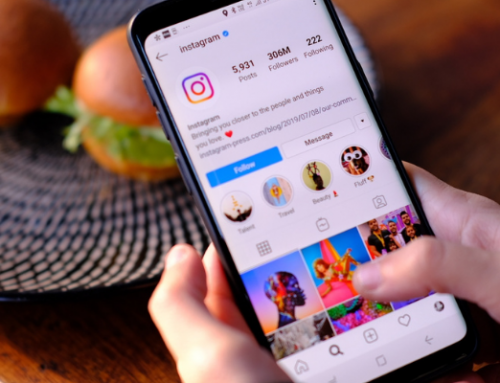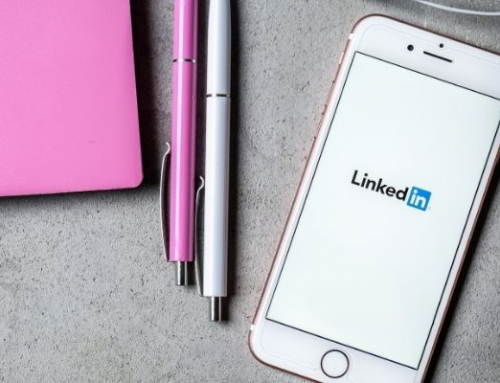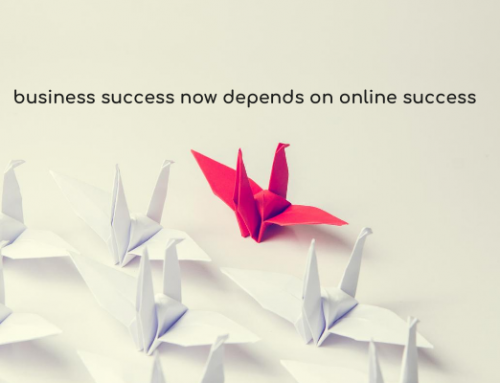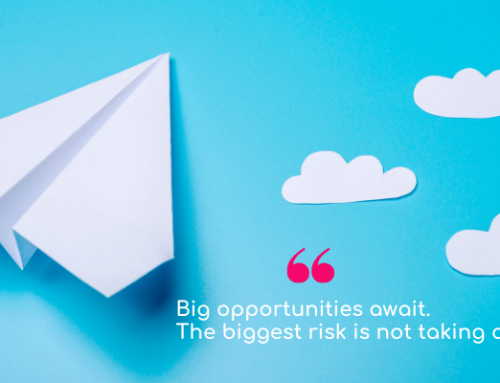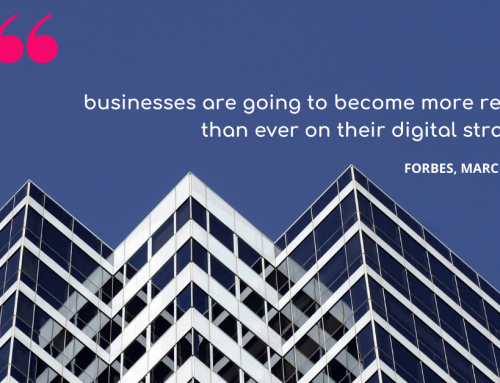Marketing has always been about connecting with your audience in the right place and at the right time. Today, that means you need to meet them and talk to them where they are already spending most of their time: on the Internet.
And that’s where digital marketing comes in – in other words, any form of marketing that exists online.
What is digital marketing?
Digital marketing encompasses all marketing efforts that use an electronic device or the Internet. Businesses leverage digital channels such as search engines, social media, email, and other websites to connect with current and prospective customers.
What is the role of digital marketing?
While traditional marketing might exist in print ads, phone communication, or physical marketing, digital marketing can occur electronically and online. This means that there are a number of endless possibilities for brands including email, video, social media, or website-based marketing opportunities.
At this stage, digital marketing is vital for your business and brand awareness, particularly with the changes that COVID-19 has caused. It seems like every other brand has a website, and if they don’t, they at least have a social media presence or digital ad strategy. Digital content and marketing is so common that consumers now expect and rely on it as a way to learn about brands.
Long story short, to be competitive as a business owner, you’ll need to embrace some or all aspects of digital marketing.
How does a business define digital marketing?
Digital marketing is defined by the use of numerous digital channels to connect with customers online. From the website itself to a business’s online branding assets – digital advertising, email marketing, online brochures, and beyond – there’s a full spectrum of tools that fall under the umbrella of “digital marketing”.
The best digital agencies have a clear picture of how each digital marketing campaign supports a company’s overarching goals. And depending on the goals, digital marketers can support a larger campaign through the free and paid channels at their disposal.
A content marketer, for example, can create a series of blog posts that serve to generate leads from a new ebook the business recently created. The social media marketer might then help promote these blog posts through paid and organic posts on the business’s social media accounts. Perhaps the email marketer creates an email campaign to send those who download the ebook more information on the company.
Types of Digital Marketing
- Search Engine Optimization (SEO)
- Content Marketing
- Social Media Marketing
- Pay Per Click (PPC)
- Affiliate Marketing
- Native Advertising
- Marketing Automation
- Email Marketing
- Online PR
- Sponsored Content
Search Engine Optimization (SEO)
This is the process of optimising your website to “rank” higher in search engine results pages, therefore increasing the amount of organic (or free) traffic your website receives. The channels that benefit from SEO include websites and blogs.
There are a number of ways to approach SEO in order to generate qualified traffic to your website. These include:
- On-page SEO: This type of SEO focuses on all of the content that exists “on the page” when looking at a website. By researching keywords for their search volume and intent, you can answer questions for readers and rank higher on the search engine results pages (SERPS).
- Off-page SEO: This type of SEO focuses on all of the activity that takes place “off the page”. This includes inbound links, also known as backlinks. The number of publishers that link to you, and the relative “authority” of those publishers, affect how highly you rank for the keywords you care about. By networking with other publishers, writing guest posts (and linking back to your website), and generating external attention, you can earn the backlinks you need to move your website up on all the right SERPs.
- Technical SEO: This type of SEO focuses on the backend of your website, and how your pages are coded. Image compression, structured data, and CSS file optimisation among other things, are all forms of technical SEO that can increase your website’s loading speed – an important ranking factor in the eyes of search engines like Google.
Content Marketing
This term means the creation and sharing of online material (such as videos, blogs, and social media posts) that does not explicitly promote a brand, but is intended to stimulate interest in its products or services.
- Blog posts: Writing and publishing articles on a company blog helps you demonstrate your industry expertise and generates organic search traffic for your business.
- Ebooks and whitepapers: Ebooks, whitepapers, and similar long-form content help educate website visitors. It also allows you to exchange content for a reader’s contact information, generating leads for your company.
- Infographics: Sometimes, readers want you to show, not tell. Infographics are a form of visual content that helps website visitors visualise a concept you want to help them learn.
Social Media Marketing
This practise promotes your brand and your content on social media channels, increasing brand awareness, driving traffic to your website, and generating leads for your business. The channels used can include:
- Snapchat
Pay Per Click (PPC)
PPC is a method of driving traffic to your website by paying every time your ad is clicked. One of the most common types of PPC is Google Ads, which allows you to pay for the top spots on Google’s search engine results pages.
Other channels where you can use PPC include:
- Paid ads on Facebook and/or Instagram: Facebook/Instagram places ads in the newsfeeds of people who match your business’s audience.
- Twitter Ads campaigns: Here, we pay to place a series of posts or profile badges to the news feeds of a specific audience, all dedicated to accomplishing a specific goal for your business. This goal can be website traffic, more Twitter followers, tweet engagement, or even app downloads.
- Sponsored Content/Ads on LinkedIn: Here, users can pay to send messages directly to specific LinkedIn users based on their industry and background, or create ads that occur as “sponsored’ within a LinkedIn users feed.
Affiliate Marketing
This is a type of performance-based advertising where you receive a commission for promoting someone else’s products or services on your website. Affiliate marketing channels include:
- Hosting video ads through the YouTube Partner Program.
- Posting affiliate links from your social media accounts.
Native Advertising
Native advertising refers to advertisements that are primarily content-led and featured on a platform alongside other, non-paid content. Facebook and Instagram ads are often considered to be “native”.
Marketing Automation
Marketing automation refers to the software that serves to automate your basic marketing operations. Many marketing departments can automate repetitive tasks they would otherwise do manually, such as:
- Email newsletters: Email automation doesn’t just allow you to automatically send emails to your subscribers. It can also help you shrink and expand your contact list so your newsletters are only going to the people who want to see them in their inboxes. Email automation also allows you to divide up your contact list so that specific groups receive only the content they have expressed an interest in.
- Social media post scheduling: If you want to grow your organisation’s presence on a social network, you need to post frequently. Social media scheduling tools push your content to your social media channels for you, so you can spend more time focusing on content strategy, and less time managing what can become an unruly process.
- Lead-nurturing workflows: Generating leads, and converting those leads into customers, can be a long process. You can automate that process by sending leads specific emails and content once they fit certain criteria, such as when they download and open an ebook.
- Campaign tracking and reporting: Marketing campaigns can include a ton of different people, emails, content, webpages, phone calls, and more. Marketing automation can help you sort everything you work on by the campaign it’s serving, and then track the performance of that campaign based on the progress all of these components make over time.
Email Marketing
Companies use email marketing as a way of communicating with their audiences. The types of emails you might send include:
- Blog subscription newsletters
- Follow-up emails to website visitors who downloaded something
- Customer welcome emails
- Holiday promotions to loyalty program members
- Tips or similar series emails for customer nurturing
Online PR
Online PR is the practice of securing earned online coverage with digital publications, blogs, and other content-based websites. It’s much like traditional PR, but in the online space.
Sponsored Content
With sponsored content, you as a brand pay another company or entity to create and promote content that discusses your brand or service in some way.
One popular type of sponsored content is influencer marketing. With this type of sponsored content, a brand sponsors an influencer in its industry to publish posts or videos related to the company on social media.
Another type of sponsored content could be a blog post or article that is written to highlight a topic, service, or brand.
What does a digital marketer do?
Digital marketers are in charge of driving brand awareness and lead generation through all the digital channels – both free and paid – that are at a company’s disposal. These channels include social media, the company’s own website, search engine rankings, email, display advertising, and the company’s blog.
The digital marketer focuses on different key performance indicators for each channel so they can properly measure the company’s performance across each one. A digital marketer who’s in charge of SEO, for example, measures their website’s “organic traffic”.
Inbound Marketing vs. Digital Marketing: Which Is It?
On the surface, the two seem similar: Both occur primarily online, and both focus on creating digital content for people to consume.
The term ‘digital marketing’ doesn’t differentiate between push and pull marketing tactics (or ‘inbound’ and ‘outbound’ methods). Both can still fall under the umbrella of digital marketing.
Digital outbound tactics aim to put a marketing message directly in front of as many people as possible in the online space – regardless of whether it’s relevant or welcomed. For example, banner ads you see at the top of many websites try to push a product onto people who aren’t necessarily ready to receive it.
On the other hand, digital inbound tactics use online content to attract their target customers by providing assets that are helpful to them. One of the simplest yet most powerful inbound digital marketing assets is a blog.
Ultimately, inbound marketing is a methodology that uses digital marketing assets to attract, engage, and delight customers online. Digital marketing, on the other hand, is simply an umbrella term to describe online marketing tactics of any kind, regardless of whether they’re considered inbound or outbound.
Does digital marketing work for all businesses?
Digital marketing can work for any business in any industry. Regardless of what your company sells, digital marketing still involves building buyer personas to identify your audience’s needs, and creating valuable online content. However, not all businesses should implement a digital marketing strategy in the same way.
B2B Digital Marketing
If your company is business-to-business (B2B), your digital marketing efforts are likely to be centred around online lead generation, with the end goal being for someone to speak to a salesperson.
For that reason, the role of your marketing strategy is to attract and convert the highest quality leads for your salespeople via your website and supporting digital channels.
Beyond your website, focus your efforts on business-focused channels like LinkedIn where your demographic is spending their time online.
B2C Digital Marketing
If your company is business-to-consumer (B2C), it’s likely that the goal of your digital marketing efforts is to attract people to your website and have them become customers without ever needing to speak to a salesperson. This may need using strong calls-to-action (CTAs), and building an accelerated buyer journey.
For B2C companies, channels like Instagram and Pinterest can often be more valuable than business-focused platforms LinkedIn.
What is the role of digital marketing in a company?
Unlike most offline marketing efforts, digital marketing allows marketers to see accurate results in real-time. As opposed to placing an ad in a newspaper and never actually knowing how many eyeballs saw it, with digital marketing, you can measure the ROI of pretty much any aspect of your marketing efforts. Some examples:
1. Website Traffic
With digital marketing, you can see the exact number of people who have viewed your website’s homepage in real-time by using Google Analytics. You can also see how many pages they visited, what device they were using, and where they came from, amongst other digital analytics data.
This intelligence helps you to prioritize which marketing channels to spend more or less time on, based on the number of people those channels are driving to your website.
2. Content Performance and Lead Generation
Load a brochure on your website, for example, and measure exactly how many people viewed the page where it’s hosted. You can also collect the contact details of those who download it by using forms. Not only can you measure how many people are engaging with your content, but you’re also generating qualified leads when people download it.
What types of digital content should I create?
You should start by creating buyer personas to identify what your audience’s goals and challenges are in relation to your business. On a basic level, your online content should aim to help them meet these goals, and overcome their challenges/pain.
Then, you’ll need to think about when they’re most likely to be ready to consume this content in relation to what stage they’re at in the buyer’s journey. This is content mapping.
With content mapping, the goal is to target content according to:
- The characteristics of the person who will be consuming it
- How close that person is to making a purchase
In terms of the format of your content, there are a lot of different things to try. Here are some options tailored for each stage of the buyer’s journey:
Awareness Stage
- Blog posts
- Infographics
- Short videos
Consideration Stage
- Ebooks
- Research reports
- Webinars
Decision Stage
- Case studies
- Testimonials
How long will it take to see results from my content?
It ultimately depends on the scale and effectiveness of your digital marketing strategy.
If you spend time building comprehensive buyer personas to identify the needs of your audience, and you focus on creating valuable online content to attract and convert them, then you’re likely to see strong results within the first six months.
If paid advertising is part of your digital strategy, then the results can come even quicker. But we do recommend focusing on building your organic (or ‘free’) reach using content, SEO, and social media for long-term, sustainable success.
Do I need a big budget for digital marketing?
As with anything, it really depends on what elements of digital marketing you’re looking to use.
If you’re focusing on inbound techniques like SEO, social media, and content creation for a preexisting website, the good news is that this can all happen successfully with a small budget (and your time).
With outbound techniques like online advertising and purchasing email lists, there is undoubtedly some expense. What it costs comes down to what kind of visibility you want to receive as a result of the advertising.
How does mobile marketing fit into my digital marketing strategy?
Another key component of digital marketing is mobile marketing. It is essential to optimise your digital ads, web pages, social media images, and other digital assets for mobile devices. If your company has a mobile app that enables users to engage with your brand or shop your products, your app falls under the digital marketing umbrella, too.
Those engaging with your company online via mobile devices need to have the same positive experience as they would on desktop. This means implementing a mobile-friendly or responsive website design to make browsing user-friendly for those on mobile devices.
Ready to start your online marketing journey? Talk to us.
